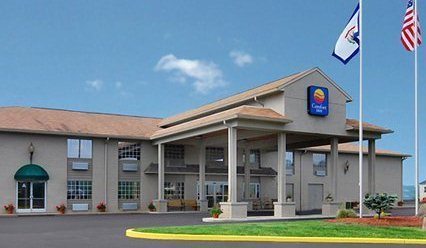Focusing on Mixed-Use Property, SVN Restaurant Resource Group Starts the Year with New Goals in Mind
After a record-setting year of sales and leasing volume, the SVN Restaurant Resource Group is heading into 2016 with refined focus on mixed-use assets. The team has identified 25 ‘high-opportunity’ retail corridors in Chicago and nearby transportation oriented suburbs.
Why Mixed-Use?
 Mixed-use properties in Cook County offer a unique tax advantage over strictly commercial properties. A mixed-use property’s assessed value is based on 10% of market value while a commercial property’s assessed value is based on 25% market value. Based solely on classification, two properties with identical market values may have dramatically different real estate tax liability.
Mixed-use properties in Cook County offer a unique tax advantage over strictly commercial properties. A mixed-use property’s assessed value is based on 10% of market value while a commercial property’s assessed value is based on 25% market value. Based solely on classification, two properties with identical market values may have dramatically different real estate tax liability.
Better federal tax depreciation benefits are also available for mixed-use property owners. For instance, if residential rentals account for more than 80% of the asset’s overall income, the property improvements are depreciated over a 27.5 year period versus a typical 39 year period.
Investors of mixed-use buildings are often entrepreneurial, making it a “natural fit for our personalities and results-driven market strategies,” as described by SVN Advisor Marcus Sullivan.
High-Opportunity Neighborhoods
 SVN Advisor Tim Rasmussen details the methodology in determining the 25 target corridors: “We recognized several common characteristics in neighborhoods where our team and clients were most successful: well-defined retail corridors, shifting demographics, high walkability scores, and close proximity to rapid transit.”
SVN Advisor Tim Rasmussen details the methodology in determining the 25 target corridors: “We recognized several common characteristics in neighborhoods where our team and clients were most successful: well-defined retail corridors, shifting demographics, high walkability scores, and close proximity to rapid transit.”
It is estimated that over 50% of neighborhood retail/commercial space is occupied by restaurant and other food related business. This trend is likely to continue as traditional brick-and-mortar retailers dwindle in the wake of e-commerce. However, the SVN Resource Group concedes the shifting dynamics present repositioning opportunities for savvy investors and restaurateurs.
Top Tier, Middle Market
The SVN Restaurant Resource Group emphasizes assets valued between $500K- $5.0M. According to SVN Advisor, Jim Martin, “These tend to be fairly easy to finance with local and regional banks, i.e., the MB’s and Bridgeview Banks of the world.”
Martin explains the strategy is consistent with the mid-market world where SVN typically contends. “We rarely compete with the likes of CBRE or JLL, yet we’re able to leverage a national platform, the most sophisticated commercial real estate tools in the industry, and ultimately win the business.”
New Blood
Christian Peppler has joined the SVN Restaurant Resources Group and will provide advisory services for mixed-use property owners throughout the Greater Chicagoland Area. Christian brings six years of commercial real estate experience and has overseen $10M in real estate transactions.
About The SVN Restaurant Resource Group
 The SVN Restaurant Resource Group provides first-in-class advisory to clients in the foodservice and hospitality industry. Landlords, restaurant and nightclub operators, bakeries, caterers, hotels, food processors and manufacturers rely on the experience, local market knowledge, industry relationships, and technology advantages possessed by this highly specialized team of commercial real estate professionals. SVN has over 200 offices throughout the US, Mexico and Canada.
The SVN Restaurant Resource Group provides first-in-class advisory to clients in the foodservice and hospitality industry. Landlords, restaurant and nightclub operators, bakeries, caterers, hotels, food processors and manufacturers rely on the experience, local market knowledge, industry relationships, and technology advantages possessed by this highly specialized team of commercial real estate professionals. SVN has over 200 offices throughout the US, Mexico and Canada.
To learn more, visit the SVN Restaurants website here.
[bctt tweet=”“We’re able to leverage a national platform, the most sophisticated commercial real estate tools in the industry, and ultimately win the business.””]


